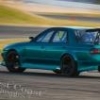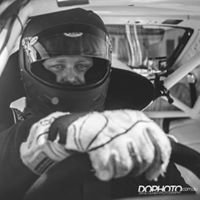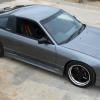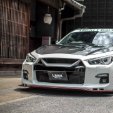Announcements
-
Similar Content
-
Latest Posts
-
I have been looking at some setting on the alarms for the Q60 and what buttons do and so and also been looking for details on the alarm in my V37 which is a standard issue with the car. settings like window roll up and a few others seem to not work at all. i cant seem to find exact info on V37 alarms so Q60 is all i can really go off i have not tried 400Z alarm settings or info yet so that will be next. any one got like a sheet of info on the alarm system in the V37 as all my documents are in japanese but i thought the system would basically be like standard through similar models?
-
I had a fuel smell coming from the drivers rear and pulled the tank out to inspect where it was coming from, turns out the breather hose from the tank to the filler neck was perished. I’m going to Japan next week and I’ll grab it while I’m there pulled the oil tank apart and started cleaning this crap out of it, some brake cleaner and rags got it looking new again
-
Hmm. Was quite a few years ago now. I think I bought from a crowd in the US called CDT Audio. The speaker is the HD-6. The HD-6CF would have been the better option (based on T-S parameters), but they were discontinued in 4 ohm at that point in time. The HD-6 is a better driver in almost every other way (than the CF) - just not as good in IB. They still do the HD-6. They might even have a more suitable (for IB) option here.https://www.cdtaudio.com/cdtnew22/products/components/woofers/midwoofers/midwoofers.htm But, here's the rub. I was working in the US a lot back then, so I got them delivered to my US office and then just brought them back to OZ myself. I don't know if they will ship to OZ, and it probably wouldn't be great cost-wise anyway. As to results. They're driven direct off the rear channels of my headunit, because the headunit can be setup to run the rears as subs. So, not a lot of power being fed there. Nevertheless, there's no shortage of volume - the sub levels don't need or want to be boosted at all. The bass is definitely not what you would call "tight". It is definitely a bit delayed compared to a proper sub. But, with the great front soundstage and really good 6.5" woofers in the front doors, I'm getting most of the bass detail from the front and the rear is really only to extend the bottom end a bit. Works for what I'm doing. I mean - until recently you couldn't really hold a conversation in my car due to the fuel pump, and for many years I had tyres so noisy (Kumho KU36 at <50 tread depth) that I had to drive with earplugs anyway!
-
curious to know what drivers you chose and the results? quik mafs, says two 6.5s should roughly equate somewhere between a single 8" or 10" driver. i agree that IB is definitely the way to go in most cars imo.
-
By Dose Pipe Sutututu · Posted
S13 and R32 rear suspension geometry is horrible once you lower it (which everyone does). The camber & toe out ramp is very aggressive, hence it's common for the S13 boys/girls to use a S14 or S15 subframe as the geometry is light years ahead. I'm sure the same can be done on R32s, but I don't know anyone that has done that.
-









Recommended Posts
Create an account or sign in to comment
You need to be a member in order to leave a comment
Create an account
Sign up for a new account in our community. It's easy!
Register a new accountSign in
Already have an account? Sign in here.
Sign In Now